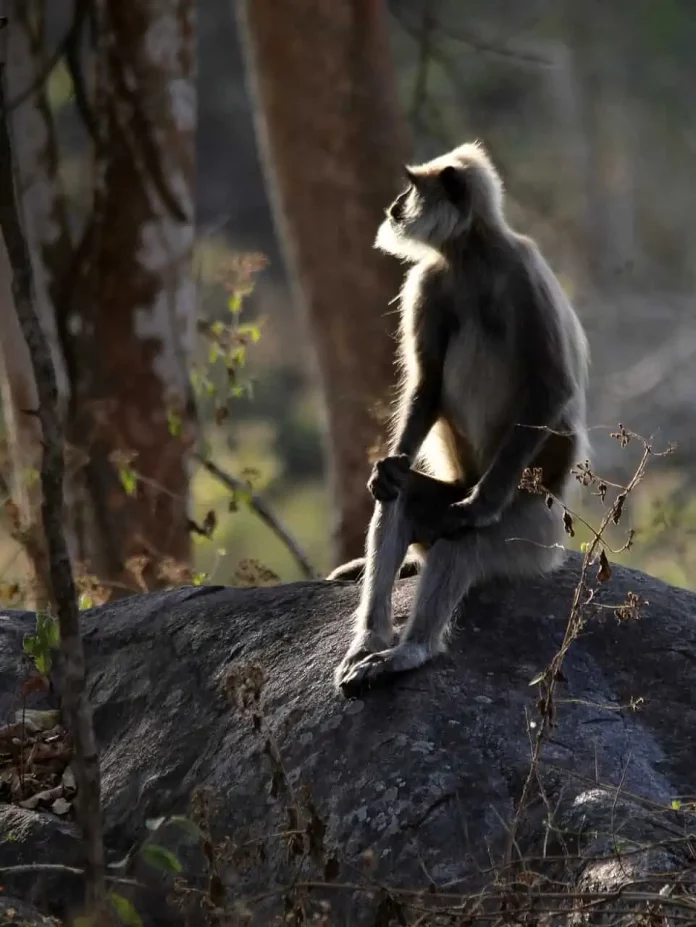There are three species of Sri Lanka Monkeys. They are Toque Macaques, Gray langurs, and Purple-faced leaf monkeys. Toque Macaque and Gray langurs can be found everywhere in Sri Lanka except the Purple-faced leaf monkey which lives in wet forests.
So let’s jump to the article that reveals this vibrant primate community’s secrets, unravel their stories, and dive into a world of sheer intrigue.
Discover The World Of Sri Lanka Monkeys And Uncover Their Fascinating Secrets
Toque Macaque
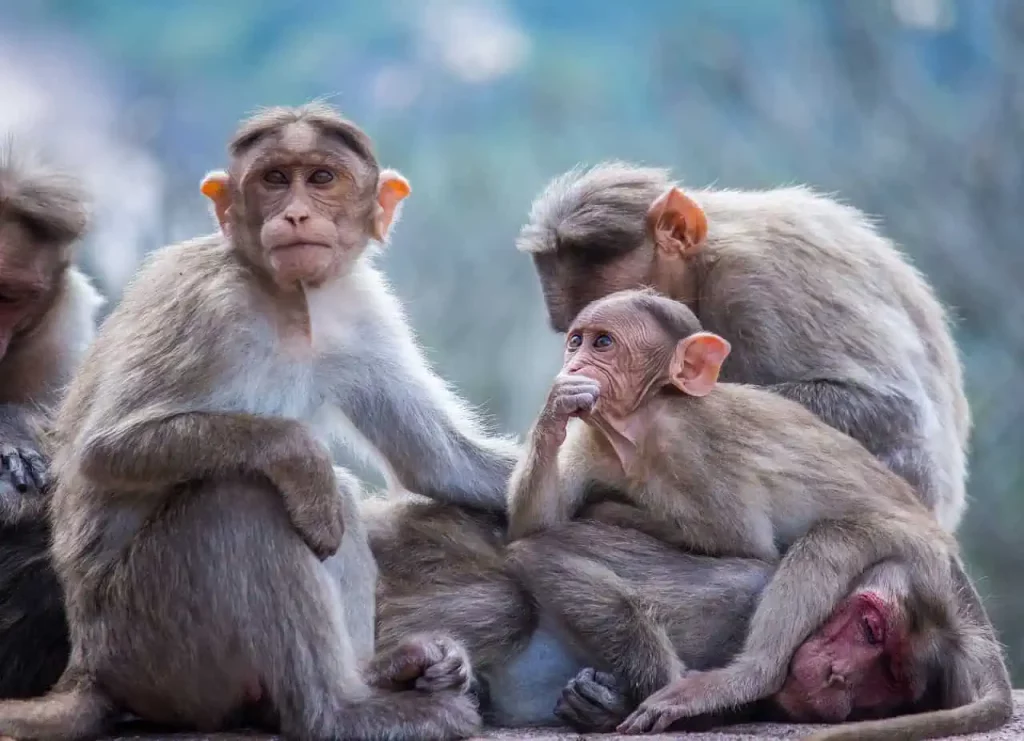
In the verdant jungles of Sri Lanka, a lively troop of monkeys swings through the treetops, their mischievous antics captivating all who lay eyes on them. Known as Toque Macaques, these charismatic creatures possess a charm that is hard to resist. Join us on an adventure that explores the secrets of the Them, delving into their habitat, behavior, diet, and much more.
Habitat
The Toque Macaque is native to the beautiful island of Sri Lanka, where they thrive in a variety of habitats. From lush rainforests to dry lowland forests, these resourceful monkeys have adapted to diverse environments. They can also be found near human settlements, gracefully navigating the interface between nature and civilization.
Distribution
Toque Macaques have claimed Sri Lanka as their kingdom, with their presence scattered across the island. From the misty central highlands to the coastal plains, these enchanting monkeys have made their mark in various regions. Their wide distribution showcases their remarkable adaptability and resilience.
Behavior and Social Organization
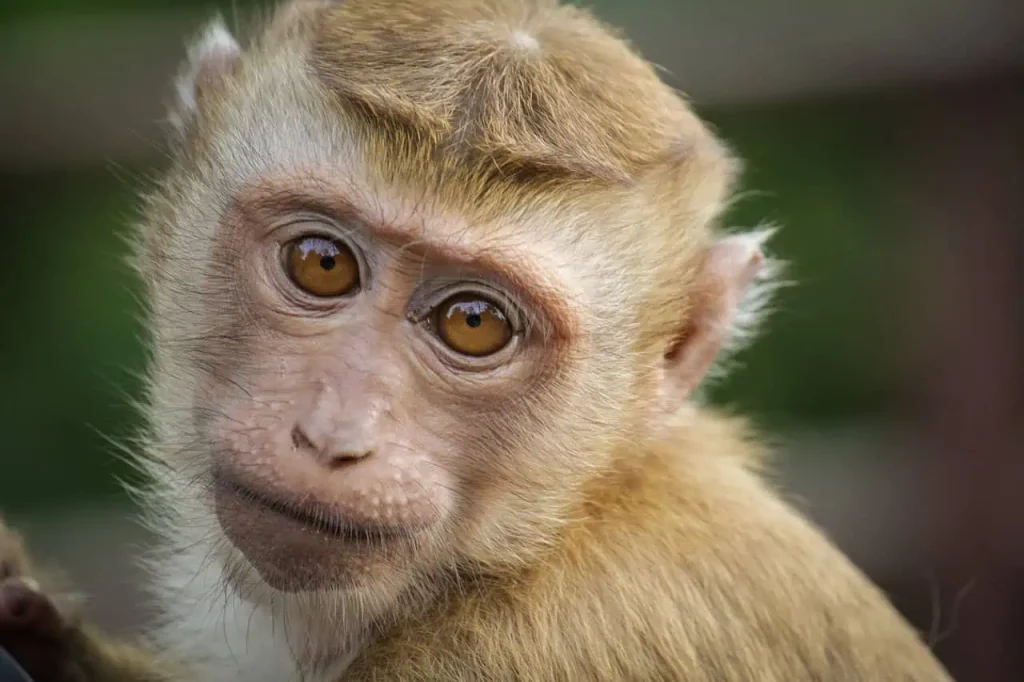
Toque Macaques are highly social creatures, living in hierarchical troops composed of females, males, and their offspring. Within the troop, a complex social structure exists, where individuals vie for their position and interact through intricate social dynamics. From grooming rituals to playful interactions, their behavior is a fascinating display of intelligence and camaraderie. Dominant alpha males monopolize mating with receptive females. The females form stable matrilines, which may be a more influential factor in the long run in Their society than that of alpha males. Women belong to castes with different social strata.
Diet
When it comes to food, Toque Macaques are true culinary adventurers. Like most monkeys in Sri Lanka, their diet consists of a variety of fruits, flowers, leaves, and even insects. They show great resourcefulness, using their dexterous hands and sharp minds to forage for food amid the lush foliage.
Reproduction and Lifespan
Toque Macaques follow a reproductive pattern that mirrors their close primate relatives. Females have around 5-6 months of the gestation period, after which they give birth to a single infant. The bond between mother and offspring is strong, as the mother provides constant care and protection. The lifespan of Toque Macaques can extend up to 20 years in the wild.
Physical Features
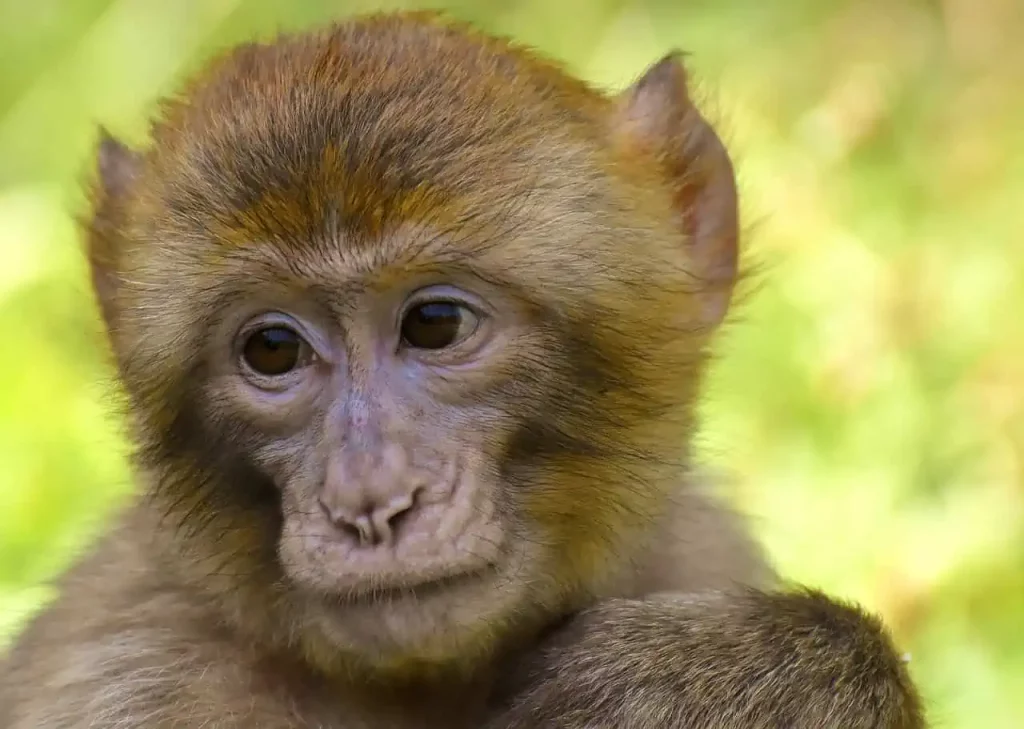
Toque Macaques possess distinct physical features that set them apart from other Sri Lankan monkeys. their physical characteristics vary according to climatic conditions. Cool climate populations have thick, dark brown coats as well as relatively short limbs and tails. Meanwhile, lowland rainforest dwellers have red or golden fur and long bonnets. Populations in the dry zone have light fur, and rather long legs, and tails. They have a short tuft of hair on their heads. Their expressive eyes and long, slender limbs add to their playful charm, captivating the hearts of all who encounter them.
Threats and Conservation
While Toque Macaques continues to enchant and entertain, they face several threats to their survival. Habitat loss, fragmentation, and human-wildlife conflicts pose significant challenges. However, conservation is not enough efforts are underway to protect their natural habitats and raise awareness about their importance. It is essential for humans to coexist harmoniously with these captivating creatures to ensure their future generations thrive.
Where to See
For those seeking an encounter with Toque Macaques, Sri Lanka offers numerous opportunities. National parks and wildlife reserves such as Yala National Park, Udawalawa National Park, and Polonnaruwa provide the perfect backdrop for observing these captivating creatures in their natural habitat.
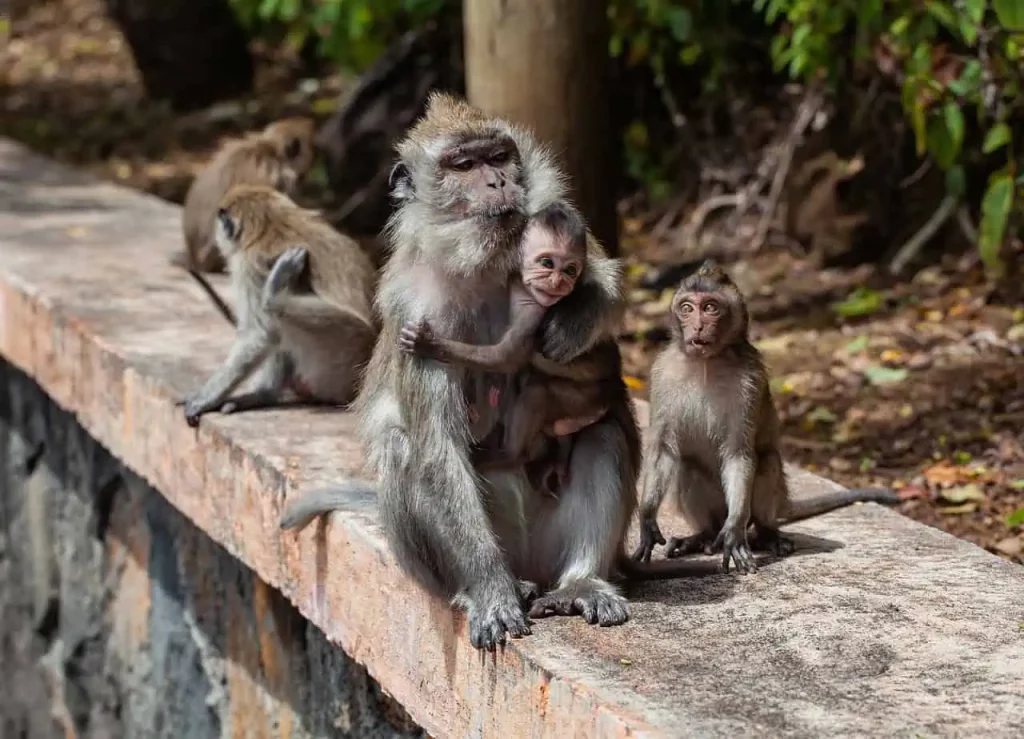
Toque Macaques are not just ordinary monkeys; they are charismatic beings with unique personalities and captivating behaviors. Whether you encounter them swinging through the trees or engaging in playful antics, these mischievous monkeys will undoubtedly leave a lasting impression on your heart.
So, unleash your inner adventurer and embark on a journey to discover the world of This magnificent creature. Let their playful spirit and captivating charm guide you through the vibrant jungles of Sri Lanka. Get ready to witness their acrobatic skills, indulge in their culinary adventures, and marvel at their social dynamics. The Toque Macaque awaits, ready to ignite your curiosity and leave you spellbound by the wonders of the animal kingdom.
Hanuman/ Gray Langur
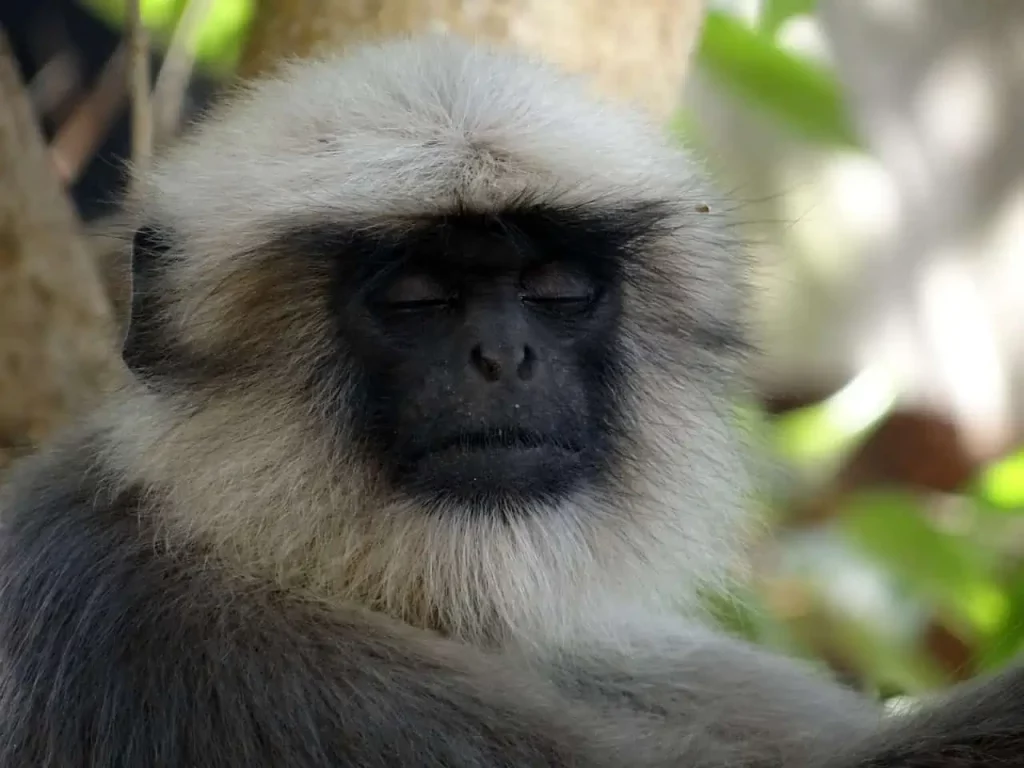
Have you ever encountered a creature that exudes wisdom, kindness, and mystery? Look at closely the world of the Grey Langur, a captivating primate that roams the forests of South Asia. With their striking appearance and intriguing behaviors, these enigmatic creatures have captured the imagination of nature enthusiasts and researchers alike.
Habitat
In the vast tapestry of nature, Grey Langurs find their home in the lush green canopies of tropical and subtropical forests. From the towering trees of India to the serene landscapes of Sri Lanka, these intelligent creatures thrive in diverse habitats. Their agile bodies allow them to navigate the intricate branches with ease, making the forest their own enchanting playground.
Distribution
As we delve deeper into the world of Grey Langurs, we find their presence spanning across the Indian subcontinent and beyond. Their populations are common in nations like India, Nepal, Bangladesh, Bhutan, and Sri Lanka. Each region provides a unique backdrop for their existence, where they adapt to the local environment and forge their place in the ecosystem.
Behavior and Social Organization
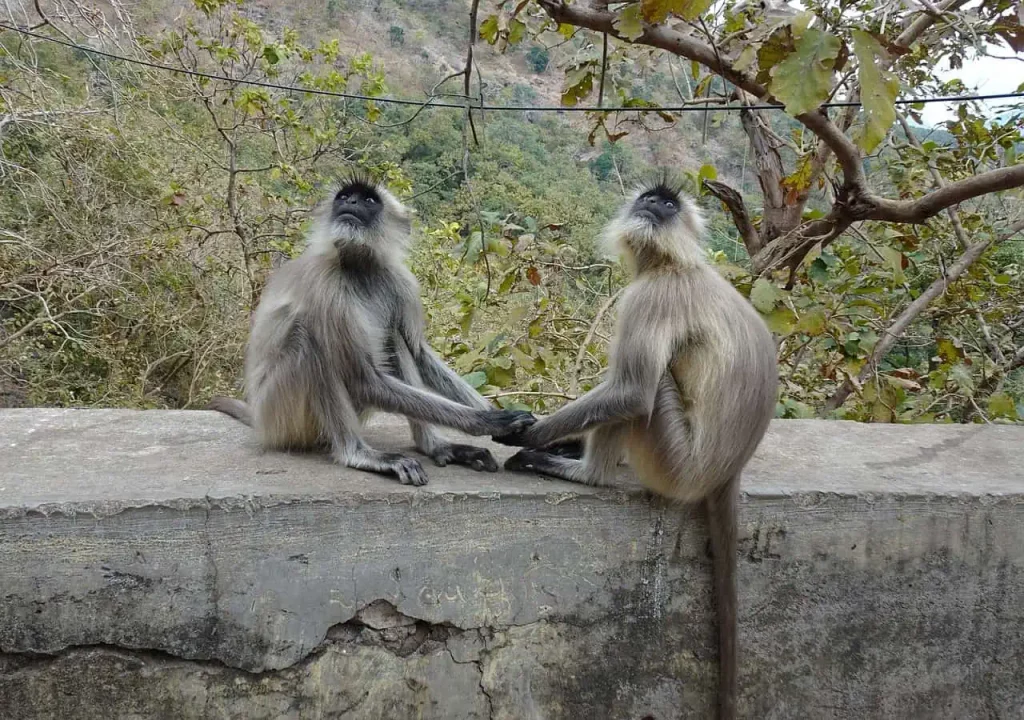
Gray Langurs are renowned for their complex social organization. Living in troops, they form intricate bonds with their fellow langurs. Within these troops, individuals establish hierarchies and develop strong social connections. It is a world where alliances are forged, disputes are settled, and harmony reigns amid the treetops.
These primates are intelligent beings, displaying a wide range of behaviors. From their acrobatic leaps to their communicative calls, Gray Langurs captivates observers with their expressions of emotions and intentions. Their social interactions and cooperation serve as a testament to the rich tapestry of their social lives.
Hanumans can live at times in large troops exceeding 50 individuals, but most of the time they live in troops of fewer than 20 individuals with a dominating male. They are usually very shy in most places apart from a few temples where they have gotten used to people. Unlike Toque Macaques, habituated Langurs are generally not aggressive toward people. They are often found in the company of Spotted deer. The deer benefits from the leaves and fruits dropped by the Langurs and, Langurs benefit from the extra pairs of eyes.
Diet
As we explore the diet of Grey Langurs, we enter a culinary journey filled with variety and adaptability. These omnivores are flexible and, feed on a diverse array of food sources. From tender leaves and ripe fruits to seeds and flowers, they savor the bounties of the forest.
Their ability to adapt their diet to the seasons and the availability of food showcases their resourcefulness. Hanumans have learned to coexist with their surroundings, utilizing their keen senses to find nourishment in the ever-changing tapestry of the forest.
Reproduction and Lifespan
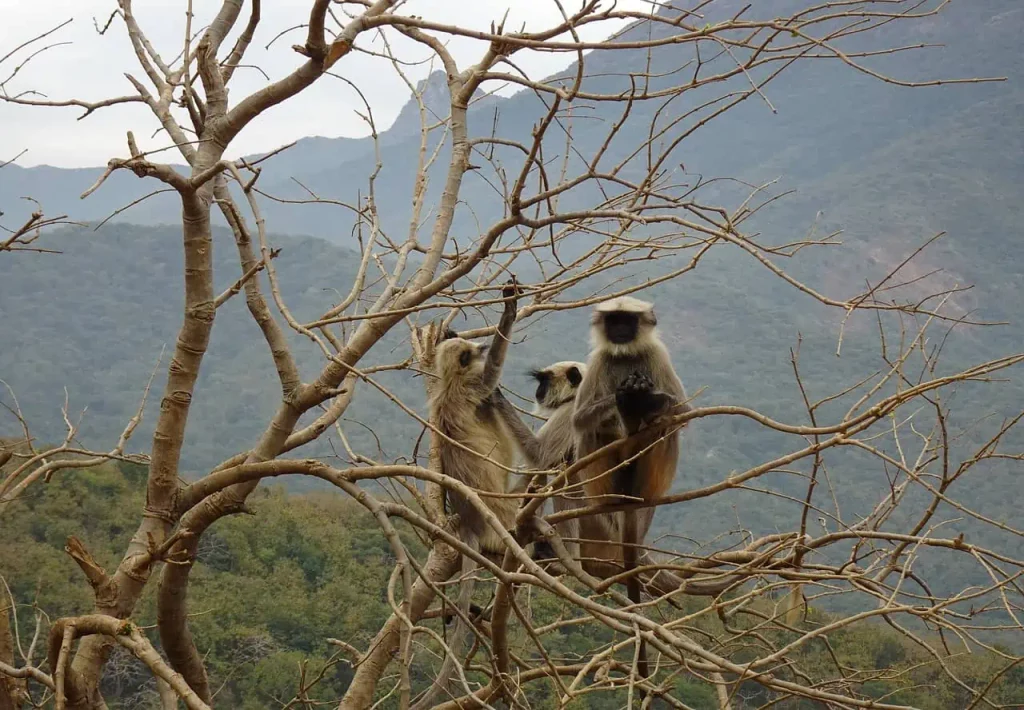
In the realm of Grey Langurs, the circle of life continues with the miracle of reproduction. Female langurs give birth to a single offspring after a 6-month gestation period. The bond between mother and infant is strong, with the mother providing care and protection for 2 years.
As the young langur grows, it learns the intricacies of survival from its troop, gradually transitioning from infancy to adulthood. The lifespan of Grey Langurs varies, with individuals living up to 20 years or more, depending on the circumstances of their habitat and the challenges they face.
Physical Features
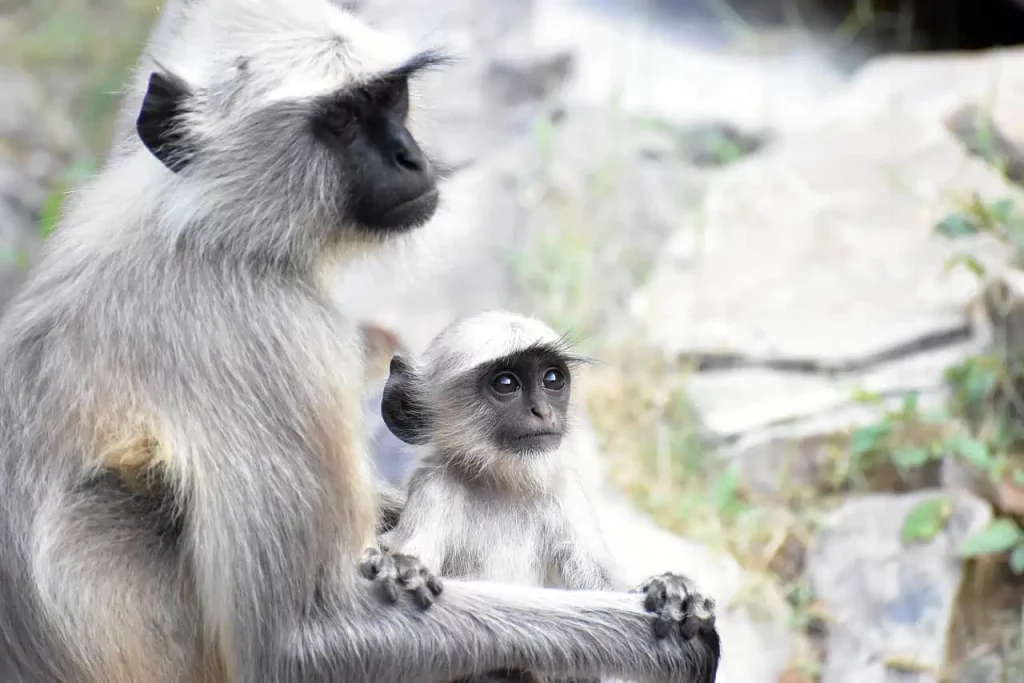
Grey Langurs possess an elegant beauty that captivates onlookers different from other monkeys in Sri Lanka. Their long limbs and slender bodies enable them to move with grace through the treetops. Their fur, as their name suggests, exhibits various shades of grey, accentuated by striking white or black facial markings.
Their soulful eyes and expressive faces add to their allure, leaving observers in awe of their majestic presence. These physical features not only serve as a means of identification but also highlight the unique characteristics that make Grey Langurs truly remarkable.
Threats and Conservation
As with many other species of Sri Lanka Monkeys, Grey Langurs face challenges and threats to their existence. Habitat loss, deforestation, and human encroachment pose significant risks to their populations.
Various organizations and conservation initiatives strive to protect these magnificent creatures and their habitats. By raising awareness, supporting conservation projects, and promoting responsible tourism, we can become guardians of the canopy and help secure a future for the Grey Langurs.
Where to See
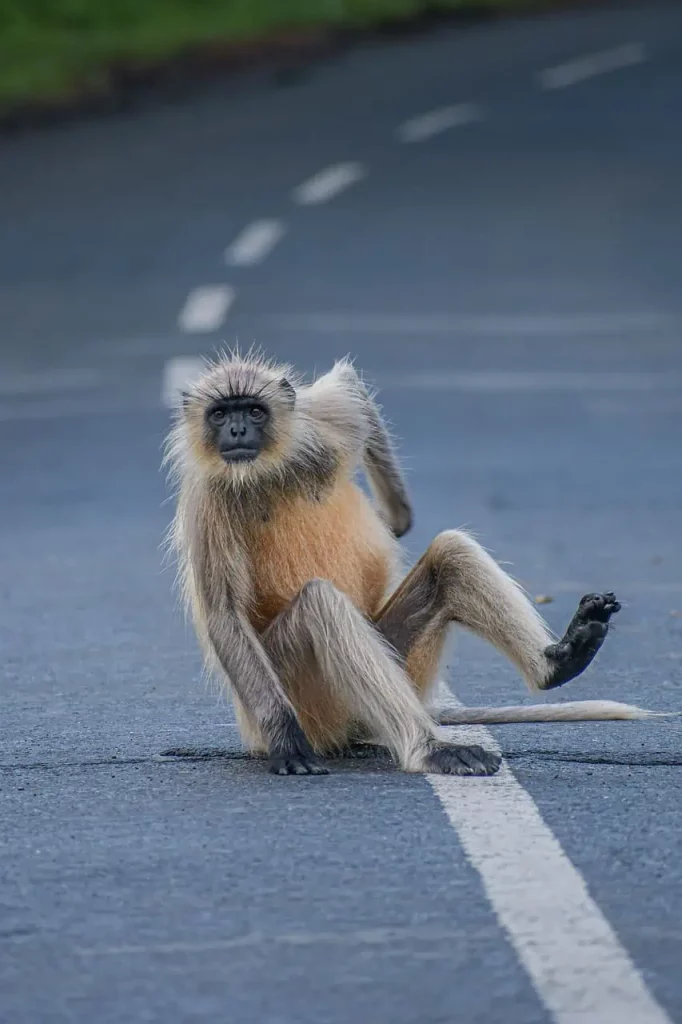
For those who yearn to witness the wonders of Grey Langurs firsthand, opportunities abound. The realms of the Grey Langur can be seen in national parks and wildlife sanctuaries such as Bandipur National Park in India and Yala National Park in Sri Lanka.
The Grey Langur stands as a symbol of the intricate connections between nature, behavior, and survival. Through understanding, conservation, and responsible interaction, we can safeguard these mesmerizing creatures and ensure that future generations will have the privilege of experiencing the beauty and wisdom of the Grey Langur.
Purple-Faced Leaf Monkey
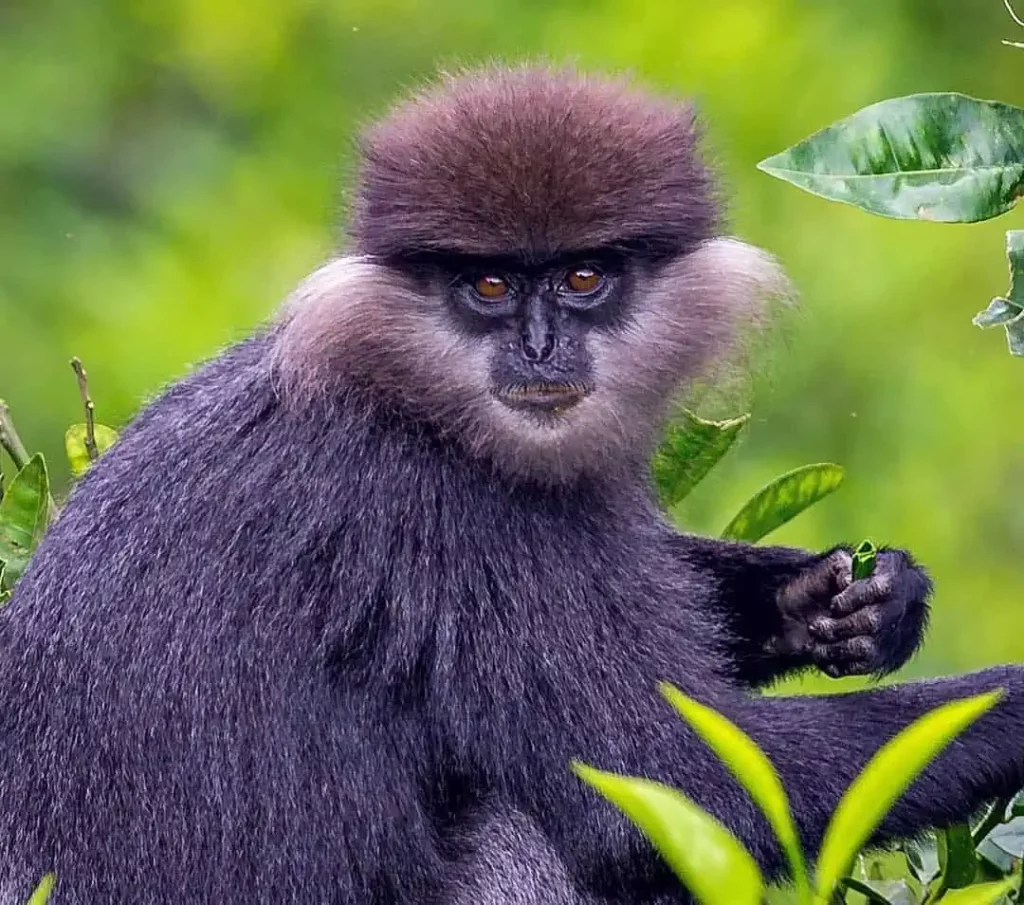
Have you ever ventured deep into the lush rainforests, searching for a creature that seems to have emerged from a painter’s palette? Look at the enigmatic Purple-Faced Leaf Monkeys in Sri Lanka, a captivating primate species that grace the canopies of Southeast Asia. Let’s see the world of these creatures to uncover their hidden habitat, social dynamics, and the wonders of their existence.
Habitat
High up in the treetops, amidst the dense foliage of Southeast Asia’s rainforests, the Purple-Faced Leaf Monkey finds solace. This enchanting creature is living in a range of habitats, including evergreen forests, tropical rainforests, and montane forests. With an affinity for a life nestled within the canopy, they spend their days leaping from branch to branch, exploring the depths of their verdant abode.
Distribution
From the emerald landscapes to the rainforest forests of Sri Lanka, this Monkey claims a diverse range of territories. They are endemic to Sri Lanka and offer a unique blend of natural wonders and rich biodiversity.
Social Organization
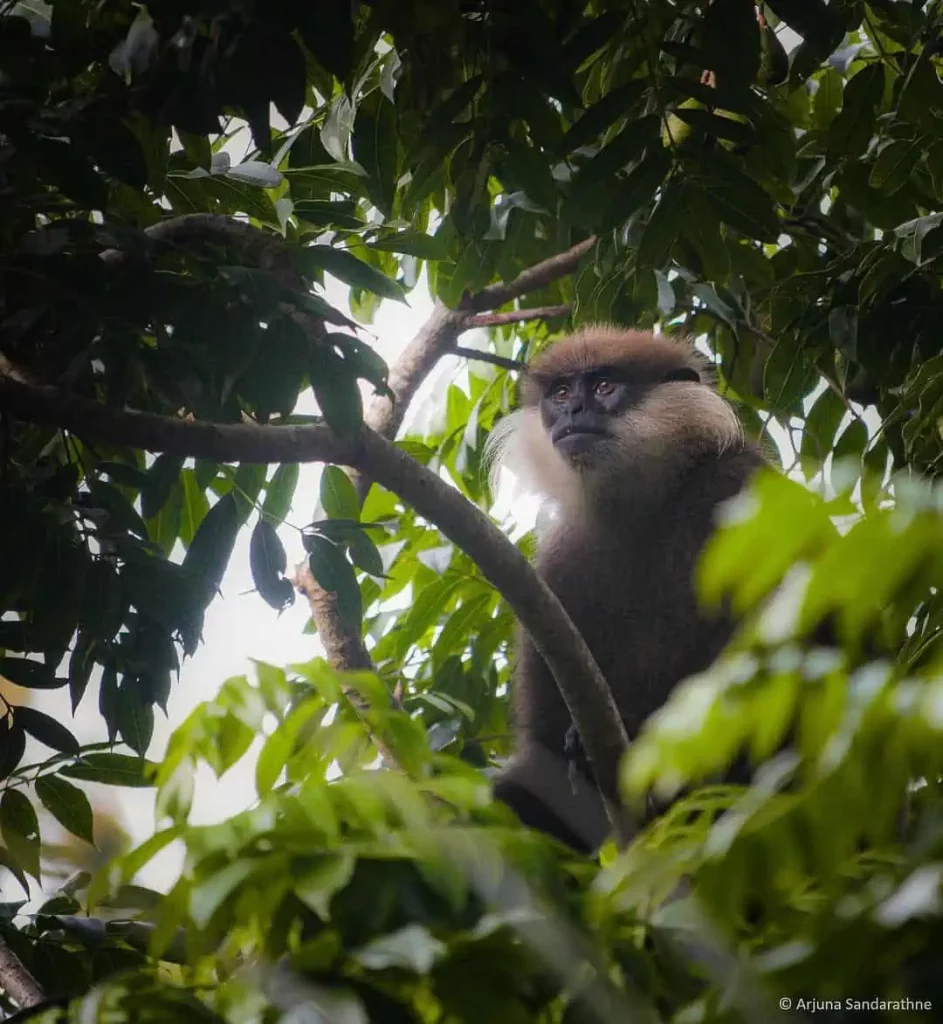
Within the realms of the rainforest, this creature navigates a complex social tapestry. They dwell in close-knit groups known as troops, typically consisting of several adult females, a dominant male, and their offspring. This social structure promotes cooperation, protection, and the nurturing of the young ones.
Behavior
As sunlight filters through the dense foliage, a spectacle awaits those lucky enough to witness it. With graceful agility, these monkeys defy gravity and move through the treetops. It spends most time of its life on trees and is not very territorial. They are active during the day and usually live in groups consisting of an adult male, up to 7 adult females, and of various ages. Some males live in bachelor groups, usually 2 to 14 in number
Diet
Like most monkeys in Sri Lanka, they are herbivores and are fond of eating anything vegetarian. They mainly feed on leaves and also eat fruits, Flowers, and seeds.
Reproduction
This Monkey species’s breeding occurs during specific periods, leading to the birth of a single offspring after a gestation period of around 200 days. The newborn clings to its mother’s fur, finding comfort and protection in her nurturing embrace.
Lifespan
As the cycle of life continues, this Monkey species experiences an average lifespan of approximately 20 years. Within this span, they contribute to the vitality of their troop, ensuring the continuation of their lineage and the preservation of their mysterious legacy.
Physical Features
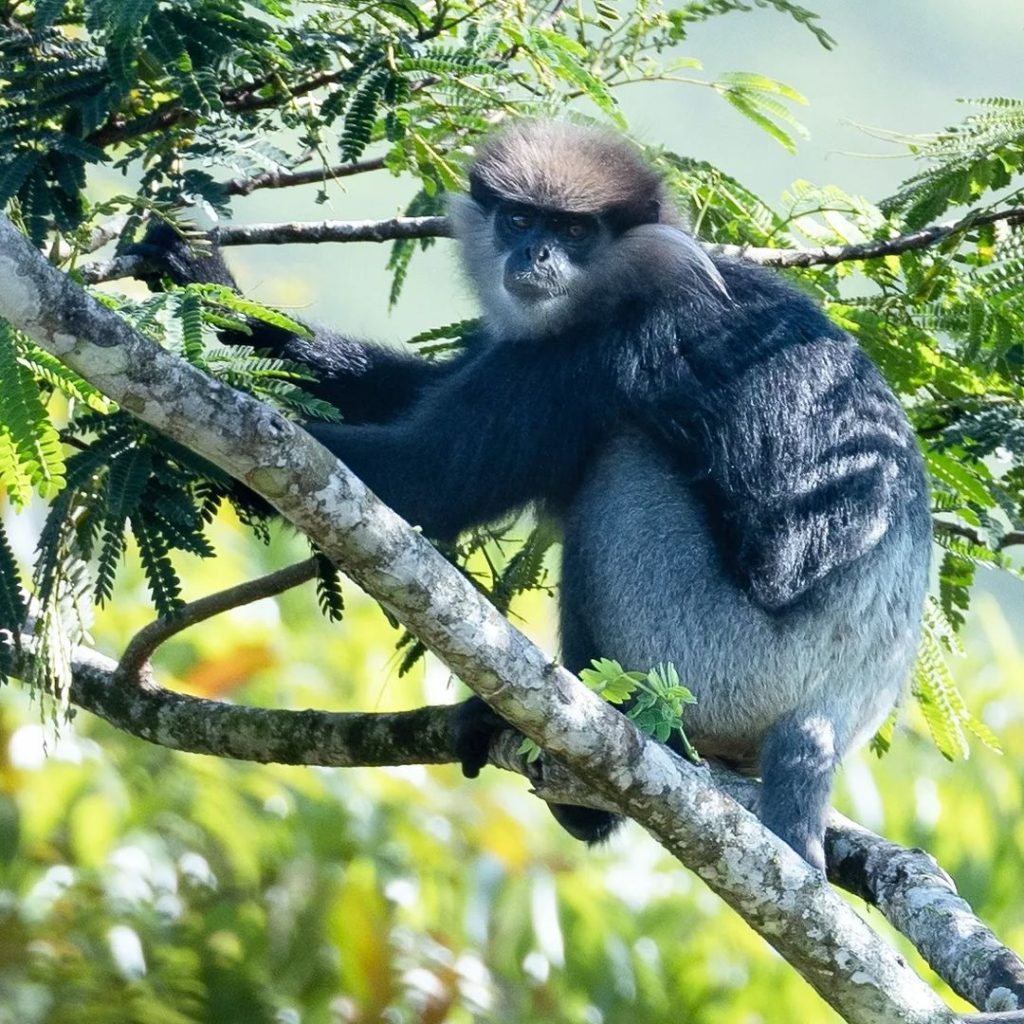
The Purple-Faced Leaf Monkey earns its name from its distinctive facial hue, a regal shade of purple that adds a touch of mystique to its appearance. Complementing this royal visage is a rich coat of fur, ranging from shades of gray to golden brown, blending harmoniously with the foliage that surrounds them.
Adaptations
Nature, in its wisdom, has bestowed upon the Purple-Faced Leaf Monkey a set of adaptations that allow it to thrive within its environment. Their strong, prehensile tails serve as a fifth limb, aiding in locomotion and maintaining balance as they navigate the swaying treetops. Furthermore, their agile bodies and sharp claws are perfectly suited for a life spent among the branches.
Conservation
As human activities encroach upon their natural habitat, the Purple-Faced Leaf Monkey faces a multitude of challenges. Deforestation, habitat fragmentation, and poaching pose significant threats to their existence. The encroachment of civilization continues to erode their homes, placing them on the precipice of endangerment.
In the face of these challenges, dedicated individuals and organizations strive to protect and preserve the Purple-Faced Leaf Monkey and its fragile ecosystem. Initiatives focusing on habitat conservation, public awareness, and sustainable tourism play a crucial role in safeguarding these captivating creatures for generations to come.
Where to see
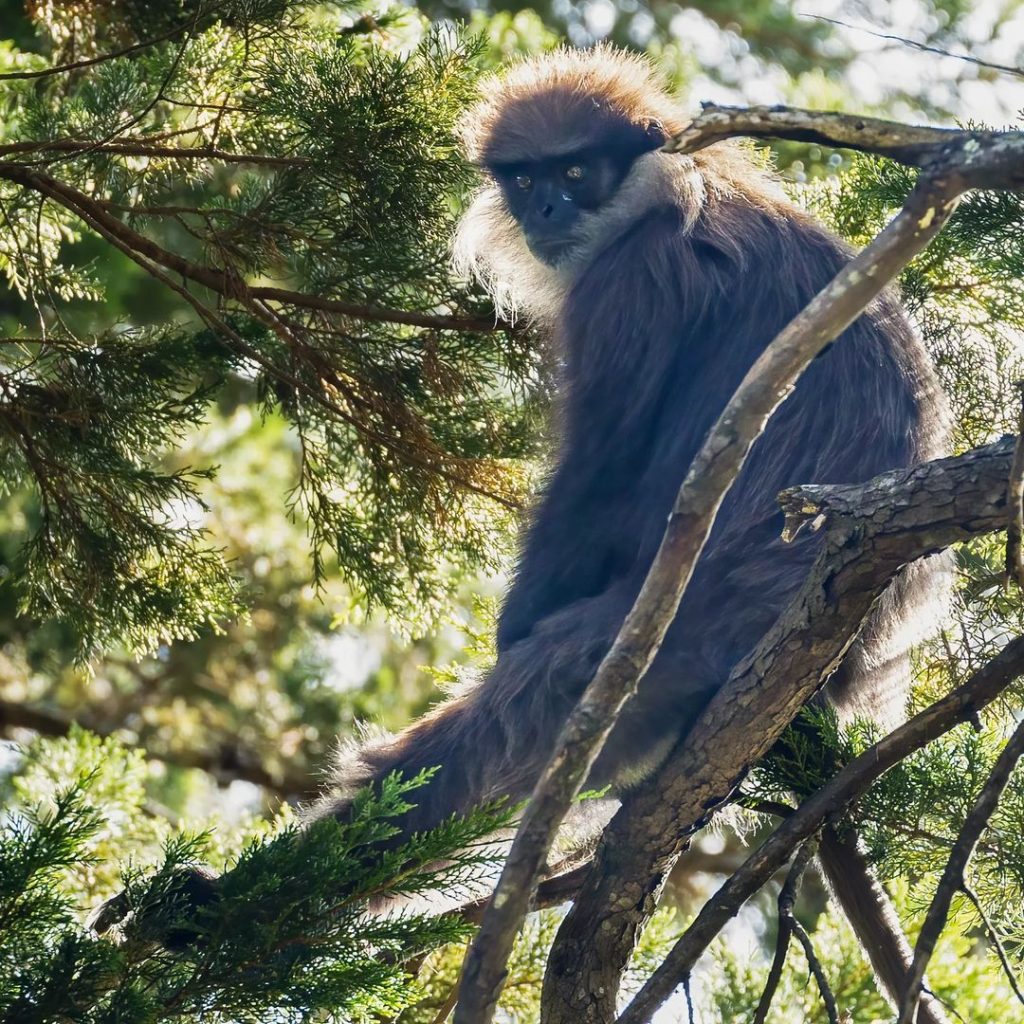
To catch a glimpse of the Purple-Faced Leaf Monkey in its natural splendor, one must venture deep into the heart of the rainforest. Sanctuaries and national parks such as Sinharaja Forest Reserve and Horton Plains National Park in Sri Lanka offer a glimpse into the world of these elusive primates. Guided tours and knowledgeable local guides can lead you to the vantage points where you can observe their mesmerizing antics, leaving you with memories to treasure for a lifetime.
The Purple-Faced Leaf Monkey represents the harmonious symphony between nature and adaptation. Their elusive nature, breathtaking appearance, and intricate social dynamics provide a window into the wonders of the rainforest. By understanding and appreciating these majestic creatures, we embark on a journey of preservation and conservation, ensuring that their vibrant presence graces the canopies for future generations to marvel at.
Conclusion
As our journey into the enchanting world of Sri Lankan monkeys comes to a close, we find ourselves reflecting on the myriad of emotions and memories they have bestowed upon us. From the playful antics that made us burst into laughter to the tender moments that touched our hearts, these captivating creatures have left an indelible mark on our souls.
But our exploration extends beyond surface-level entertainment. We have to realize that we are ultimately responsible for these lovely creatures’ fate. In order to preserve their ecosystems and guarantee their future, conservation activities are essential. We should keep in mind that by supporting these initiatives and fostering a deep appreciation for Sri Lanka Monkeys, we can contribute to their well-being and the preservation of our shared natural heritage.
FAQs
- What kind of monkeys live in Sri Lanka?
Sri Lanka is home to several species of monkeys, including the Purple-faced Langur, Toque Macaque, and the Grey Langur. - What is the black-faced monkey in Sri Lanka?
The black-faced monkey in Sri Lanka is likely referring to the Purple-faced langur, which has a distinctively dark face.
- Why is Sri Lanka exporting monkeys to China?
The Sri Lankan government had decided to export monkeys from Sri Lanka to China. However, in the past, there were occasions when a limited number of monkeys could be exported for scientific research or zoological purposes, and this time the reason seems to be for zoological purposes as well as overpopulation control and crop protection.
Also, it is aimed at conserving them in order to reduce the threats caused by the conflicts between the farmers and the monkeys due to the crop damage caused by the monkey to the farming areas.
4 Are there monkeys in Kandy Sri Lanka?
Yes, there are monkeys in Kandy, Sri Lanka. The Toque Macaque and other monkey species are found in various parts of the country, including Kandy.
- What is the most common monkey in Sri Lanka?
The most common monkey species in Sri Lanka is arguably the Toque Macaque. They are widespread and often seen in various habitats across the island.
- Which monkey is friendly to humans?
Among the Sri Lanka monkeys, the Toque Macaque is generally more accustomed to human presence and can be somewhat friendly, although interactions with wild animals should always be approached with caution and respect for their space.

